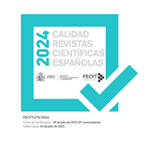Utility and identity: an analysis of two rhetorical strategies in TV
Resumen
Our starting point is the observation that television advertising sometimes attempts to persuade the viewer of the value of a product by showing how useful it will be to him in resolving a problem while, on other occasions, it does this by illustrating how it will help him to construct an identity which will be appreciated by himself and others (in this article, the convention of assuming that the communicator is female and the audience, male, will be followed). In accordance with the reason/tickle theory, the more the advertiser bases her strategy on the utility of the product, the closer her message will be to a prototypical reason ad. In contrast, the more she bases it on the capacity of the product to help the consumer to acquire a glamorous identity, the closer it will be to a prototypical tickle ad. In the first case, the advertisement is intended to address the viewer’s uncertainties directly, informing him efficiently about what is being sold to him and what use or savings it offers him. In the second case, meanwhile, the aim of the advertisement is to transmit the communicative intention of the advertiser and thus capture his attention. It will not, however, resolve the viewer’s uncertainties directly, but will rather base its relevance on its capacity to make him infer an array of weak implicatures which associate the product with a glamorous identity. This paper presents an in-depth analysis of nine advertisements, allowing us to describe in detail some specific cases which respond both to these two prototypes and to various points along the scale between them. The objectives are twofold: First, to offer the researcher a theory which allows him to make a thorough and rigorous analysis of the discursive nature of the television advertisement; and secondly, to use this theory to offer an explanation which responds to these characteristics of the above-mentioned strategies.Descargas
Descarga artículo
Licencia
La revista Círculo de Lingüística Aplicada a la Comunicación, para fomentar el intercambio global del conocimiento, facilita el acceso sin restricciones a sus contenidos desde el momento de su publicación en la presente edición electrónica, y por eso es una revista de acceso abierto. Los originales publicados en esta revista son propiedad de la Universidad Complutense de Madrid y es obligatorio citar su procedencia en cualquier reproducción total o parcial. Todos los contenidos se distribuyen bajo una licencia de uso y distribución Creative Commons Reconocimiento 4.0 (CC BY 4.0). Esta circunstancia ha de hacerse constar expresamente de esta forma cuando sea necesario. Puede consultar la versión informativa y el texto legal de la licencia.











